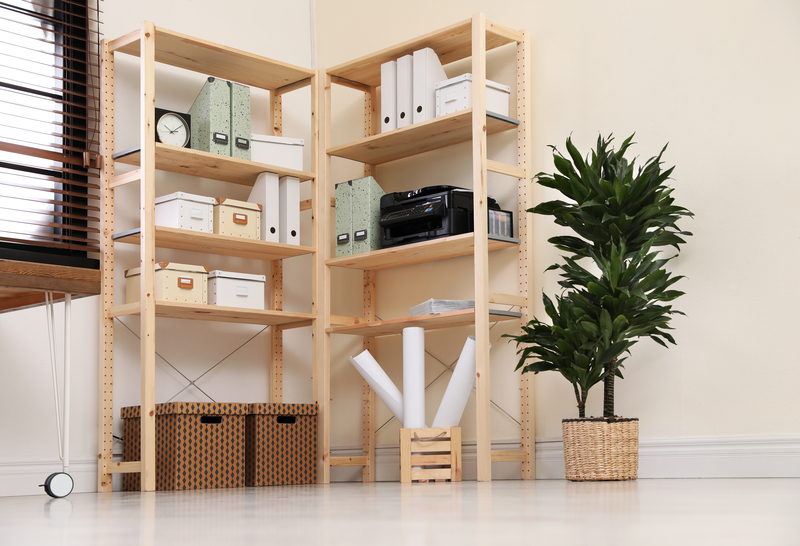Whether you’re looking for smart ways to clear your kitchen counters or trying to accommodate your kids’ growing collection of toys, finding storage in unexpected parts of your home allows you to make the most of the space you have. Ahead, you will find seven ways to easily convert just about any area into a storage solution, according to our experts.
Adjust your shelves
Reworking the shelf heights in your cabinets or bookshelves might be the easiest way to improve your storage options; raising or lower the shelves to accommodate more items is fast, easy, and free. “It’s the same space, but you’re using it more effectively,” says Lisa Zaslow of Gotham Organizers. “Add an additional shelf so all the small things are together and you can make more vertical space. For example, if you didn’t think you could store your mouthwash in the medicine cabinet, adjust it, and you may be able to.” If your piece doesn’t have pre-drilled holes that work for your needs, look for shelf-doubling stands that enable you to use the full height of the nook or add hooks underneath shelves to hang lighter items.
Use your doors
Adding storage to the back of your closet door is an obvious solution, but the same technique works for other doors in your home, too. “Everyone thinks about over-the-door shoe racks—they’re a pretty common way to use underutilized surface area—but they don’t always think about using that space for cabinets,” says Zaslow. Adhesive wall pockets and stick-on shelves can hold nail polish or makeup in the bathroom; cutting boards inside a kitchen cabinet; or scarves and belts in the closet. The corners of your bedroom or bathroom and even the door hinges can provide extra room: Use them to mount a pole with bars that run parallel to the floor to store extra hand or bath towels.
Look toward the ceiling
Shelves mounted towards the top of your wall—about 14 inches lower than the ceiling—offer out-of-the-way storage for seasonal clothes in the bedroom, stuffed animal collections or rainy-day activities in the playroom, and holiday serving dishes in the dining room. “You can install high shelves in a space you wouldn’t think of,” says Zaslow, who suggests the areas above doorways as an overlooked spot.
Assess your stairs
For a simple way to store often-used items, Zaslow recommends baskets designed to sit on your stairs. These can work in several ways: Use them as a landing spot for items waiting to be put away in their proper spot; keep cleaning supplies in a central spot so they’re easy to access whether you’re cleaning upstairs or down; or, if the stairs are near your door, utilize them to keep shoes, winter hats and gloves, or work bags and backpacks ready for the morning rush.
Use your walls
The possibilities for adding vertical storage to your space are nearly endless: Pegboards in your office can store chargers and pens; baskets and pockets near your virtual learning space can hold workbooks and craft supplies; and narrow bookshelves—as slim as 12 inches—can tuck into even the smallest unused corner to keep clutter off the floor. Even a wall with a fireplace can provide an unexpected solution: Zaslow has turned unused fireplaces into display areas for pretty books, vase collections, and candleholders.
Display your storage
Using bins, baskets, or boxes to store your spare items may seem obvious, but they offer seamless ways to incorporate extra storage into your décor. “With attractive trunks, suitcases, and boxes, you can store things pretty much anywhere,” says Zaslow. Use them in place of side tables or a coffee table, put them at the end of the bed or under a plant in the corner of your room, or slide them under the sofa or sideboard to create space to hide everything from old photos or extra blankets to video games and hobby supplies.
Go custom to transform absolutely any corner
While investing in custom carpentry is more complicated, it is a long-term solution to many storage woes. Add a small cupboard under your staircase or turn each riser into a pull-out drawer (talk about genius!); build shelves to fit awkward spaces; or create built-in storage benches and cabinets in the dining room, kitchen, or living room, says Zaslow. “It only takes 24 inches of space to make a closet,” she says, which means adding one to a bedroom or hallway can also increase your storage opportunities without invading the rest of your room.
